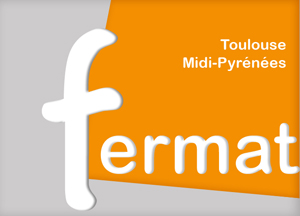Development of a compressible two-phase solver with phase change for the study of cavitation
Marie Bibal
Thursday, november 23th at 10:00 AM
Nougaro Amphitheatre
Direct Numerical Simulation of the formation and dynamics of cavitation pockets in a high velocity liquid flow
Summary : The numerical simulation of the cavitation phenomenon is notably intricate due to the highly significant couplings that exist between hydrodynamics (depression of high-speed,flow), thermodynamics (phase change in depression zones), acoustics, and shock waves generated during the implosion of vapor bubbles. Moreover, such flows are characterized by variations in the Mach number caused by fluctuations in in the speed of sound. Thus, the numerical simulation of this phenomenon proves to be particularly demanding, both in terms of modeling the physical aspects and in the development of robust numerical methods. In this study, a new algorithm has been developed to model compressible two-phase flows in the presence of phase change, with the specific aim of simulating cavitation. To effectively conduct this study, advanced numerical methods, were devised, including the formulation of a phase change model and the adaptation of the immersed boundary method to account for complex geometries. The simulations are based on a compressible code coupled with a semi-implicit projection method that allows for the treatment of low Mach flows. Finally, this innovative algorithm was implemented to simulate the cavitation of a bubble within a convergent nozzle.
Keywords : compressible, two-phases flows, phase change, cavitation, DNS
Jury
- M. Vincent MOUREAU, Rapporteur
- M. Daniel FUSTER, Rapporteur
- M. Stéphane POPINET, Examinateur
- M. François-Xavier DEMOULIN, Examinateur
- M. Sebastien TANGUY, Directeur de thèse
- Mme Annafedrica URBANO, Co-directrice de thèse
- M. Benoît Cointe, invité





